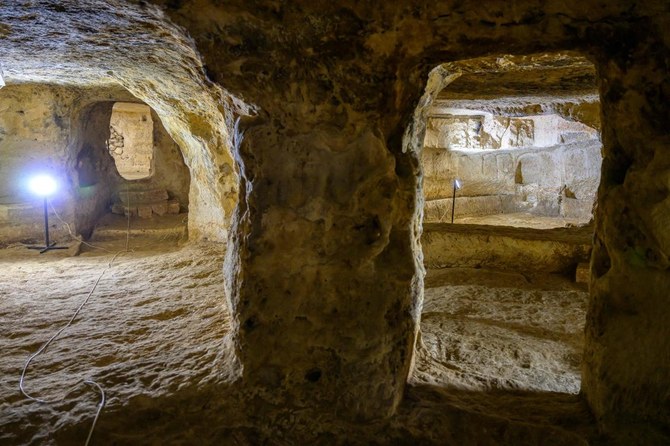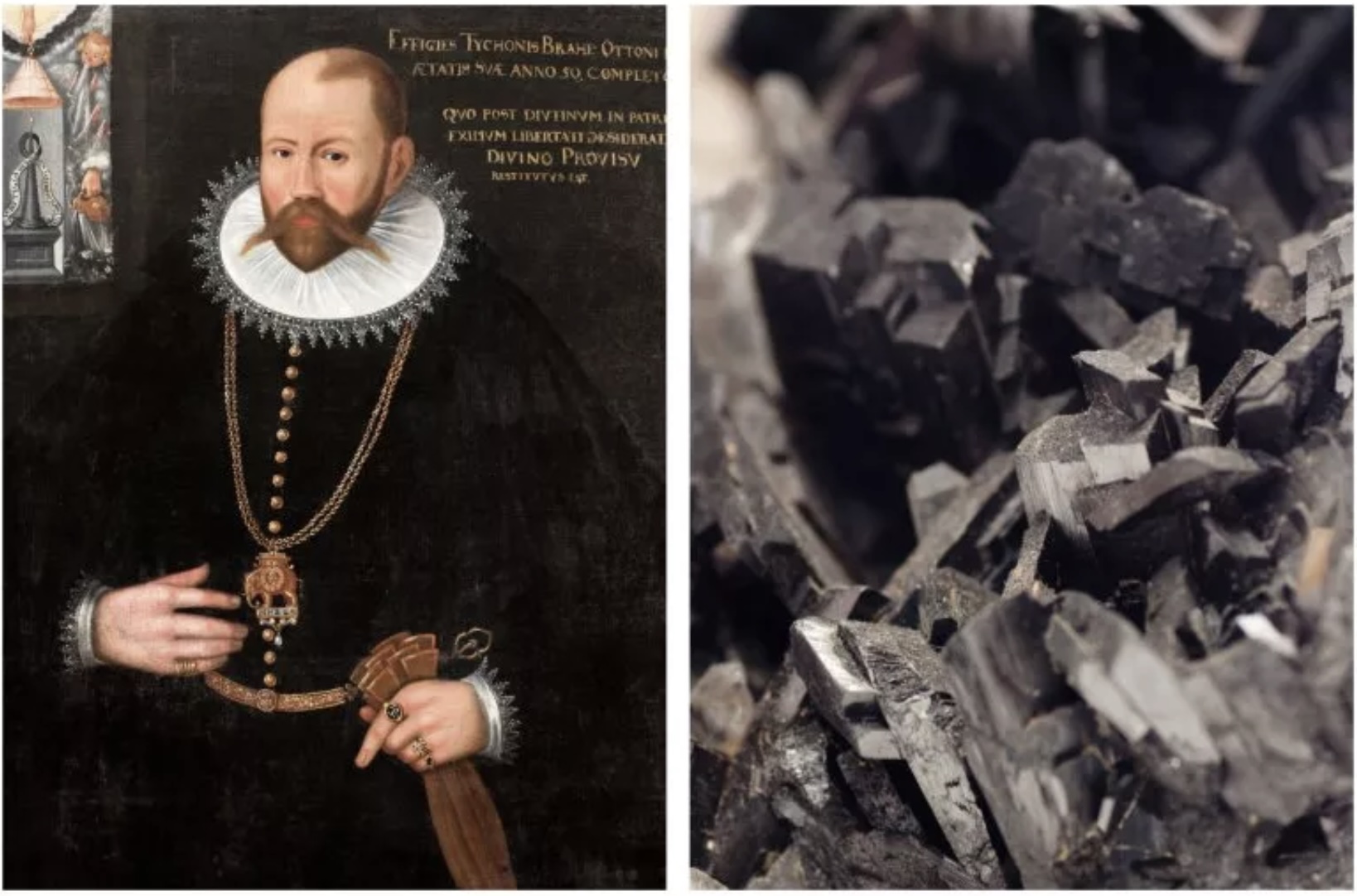Historians suggest the city's foundation dates back to the reign of King Ashurnasirpal II, who ruled the Neo-Assyrian Empire from 883 to 859 BC. This unique cave city is nestled in a region once known as Mesopotamia, a historical land renowned for birthing some of the world’s earliest and most influential civilizations.
In the southeastern region of Türkiye, Midyat holds a hidden wonder beneath its surface: an expansive underground city, potentially the largest in the country. Remarkably, a historian proposes that this subterranean marvel's origins trace back to the ninth century BC, a period long before the birth of Jesus Christ.
In a stroke of serendipity, archaeologists uncovered the sprawling underground city of Midyat in 2020. During excavations of house cellars near the Syrian border, they unexpectedly stumbled upon a vast network of caves, revealing a hidden city beneath the existing one.
Through their tireless efforts, workers have already revealed over 50 subterranean rooms, all interconnected by an impressive 120 meters of tunnels painstakingly carved into the rock.
However, the excavated area represents just a tiny fraction of the site's estimated 900,000-square-meter expanse. If this estimate proves accurate, Midyat's underground city would stand as the largest in Türkiye's southern Anatolia region, and potentially even the world, according to Midyat conservation director Mervan Yavuz who oversaw the excavation.

Yavuz explains the city's purpose, saying, "People sought refuge in these caves to protect themselves from harsh weather, enemies, predators, and diseases, eventually transforming them into a functional city."
He further traces the city's ancient origins back to the reign of King Ashurnasirpal II, who ruled the Neo-Assyrian Empire from 883 to 859 BC.
During its peak in the seventh century BC, the Neo-Assyrian Empire's vast territory extended from the Gulf in the east to Egypt in the west.
In this era, the city was known as Matiate, and its original entrance demanded a unique entry method: people had to bend in half and squeeze through a circular opening.
It was this unusual entrance that initially hinted to the Midyat municipality about the existence of its hidden counterpart.
"We had suspicions about its existence," Yavuz recounted as he navigated through the dimly lit cave.
"Back in the 1970s, the ground collapsed, and a construction machine fell in. However, at that time, we didn't investigate further. We simply reinforced and sealed the opening."
The region encompassing the cave city was once known as Mesopotamia, recognized as the birthplace of some of the earliest civilizations in the world.
Throughout history, numerous major empires conquered or traversed these lands, potentially providing a compelling reason for the inhabitants around Matiate to seek refuge in the subterranean city.
Historian Ekrem Akman from the nearby University of Mardin paints a picture of the region's turbulent past, stating, "Before the arrival of the Arabs, these lands were fiercely contested by a succession of powerful empires: the Assyrians, the Persians, the Romans, and then the Byzantines." This constant power struggle likely created an atmosphere of instability and insecurity for the local populace.

Yavuz adds another layer to this narrative, pointing out that "Christians from the Hatay region, fleeing persecution from the Roman Empire, built monasteries in the mountains to escape their attacks." This suggests that the underground city of Matiate may have served a similar purpose, offering a safe haven for those seeking refuge from conflict and oppression. It is possible that the city's subterranean nature provided not only physical protection but also a sense of community and continuity in a world marked by upheaval and uncertainty.
Yavuz speculates that Matiate's concealed nature might have made it an ideal sanctuary for marginalized religious communities. He postulates that Jews and Christians, facing persecution and restrictions on their faiths, could have sought refuge in the underground city to practice their beliefs in secret. This theory is bolstered by the presence of enigmatic carvings on the walls—a horse, an eight-point star, a hand, trees—which could hold symbolic meaning for these religions. Moreover, the discovery of a stone slab on the floor of one room hints at its potential use as an altar for clandestine celebrations or sacrifices, lending further credence to this idea. The city's subterranean environment would have offered both physical protection and a cloak of secrecy, allowing these communities to preserve their religious practices and traditions away from the scrutiny and oppression of the prevailing authorities.
The presence of these symbolic carvings and potential ritualistic spaces suggests that Matiate was more than just a physical refuge. It likely served as a spiritual center, providing a space for these communities to maintain their cultural identity and religious practices in the face of adversity. The city's hidden depths may have fostered a sense of community and belonging, offering solace and hope to those seeking refuge from a world that sought to suppress their beliefs.
Yavuz highlights the challenge of attributing specific findings to specific periods or groups due to the city's long history of continuous occupation. He emphasizes the diverse cultural influences that shaped the city, stating, "Pagans, Jews, Christians, Muslims, all these believers contributed to the underground city of Matiate."
Curator Gani Tarkan, who previously worked at the Mardin Museum, adds that even after the threats of centuries of invasions had subsided, the caves continued to be used. This museum houses artifacts discovered within the caves, including household items, bronzes, and pottery, offering glimpses into the daily lives of the city's inhabitants across different eras.
Tarkan elaborates on the city's prolonged use, saying, "People continued to utilize this place as a living space long after the initial threats had passed." He further notes the diverse functions of the rooms, stating that "Some rooms served as catacombs, providing a final resting place for the deceased, while others were used for storage, keeping essential supplies and valuables safe."
Excavation leader Yavuz draws attention to a series of round holes carved into the cool, dimly lit walls. These holes were designed to hold wine-filled amphorae vessels, showcasing the ingenuity of the city's inhabitants in preserving their produce in the underground environment. This detail highlights a fascinating connection to the present day, as the Mardin region's Orthodox Christian community continues the ancient tradition of wine production, passed down through generations.
Beyond Midyat, Türkiye boasts another remarkable testament to its rich history of cave dwelling: the ancient cave villages in Cappadocia, located in the central part of the country. These extraordinary settlements, carved into the region's unique volcanic rock formations, provide further evidence of the long history of human habitation and adaptation in this captivating landscape. The existence of both Midyat's underground city and Cappadocia's cave villages underscores the resourcefulness and resilience of past civilizations in utilizing their surroundings to create thriving communities in challenging environments. They also offer a glimpse into the diverse cultural practices and traditions that have shaped Türkiye's vibrant history.
Tarkan points out a key architectural difference between Matiate and Cappadocia's underground cities. He explains that while the latter are characterized by rooms vertically stacked on top of each other, Matiate's layout expands horizontally, further showcasing the unique nature of this subterranean marvel.
The municipality of Midyat, which is funding the ongoing excavation efforts, has ambitious plans for the site. Their vision includes continuing the excavation until it is ready to be unveiled to the public, hoping that it will become a popular tourist attraction and draw visitors to the city of 120,000. The city envisions the underground city as a major contributor to its tourism industry, offering a unique experience for travelers eager to delve into the region's rich history and witness this remarkable feat of ancient engineering firsthand. The potential opening of the site to the public promises to not only boost the local economy but also offer a fascinating window into the past for people from all over the world.













0 Comments